Artist Of The Month October 2021: Ángel R. López-Sánchez
Dark Sky Traveller + The Australasian Dark Sky Alliance: A Chat With Founder Marnie Ogg
He is an astrophysicist and science communicator working at the Australian Astronomical Optics (AAO) and the Department of Physics and Astronomy of the Macquarie University (MQ) in Sydney. His research is focused in the analysis of star formation phenomena in galaxies of the Local Universe, especially in dwarf starbursts and spiral galaxies, using multi-wavelength (UV, optical, IR, radio) data. He presented his PhD Thesis at University of La Laguna and the Instituto Astrofisica de Canarias (Spain) in 2006.
Dr. López-Sánchez is passionate science communicator who continuously gives talks and public lectures, writes popular science articles, podcasts the Skyentists and organises science communication events and stargazing activities. He is very active in social media, his Twitter feed is @El_Lobo_Rayado.
Below run a selection of his entered works.
Autophoto
This is an auto photo (not a selfie) taken in front of the 2dF instrument at the 3.9m Anglo-Australian Telescope on January 2019. I'm uploading it here for having it always ready when they ask me for a photo ;-)
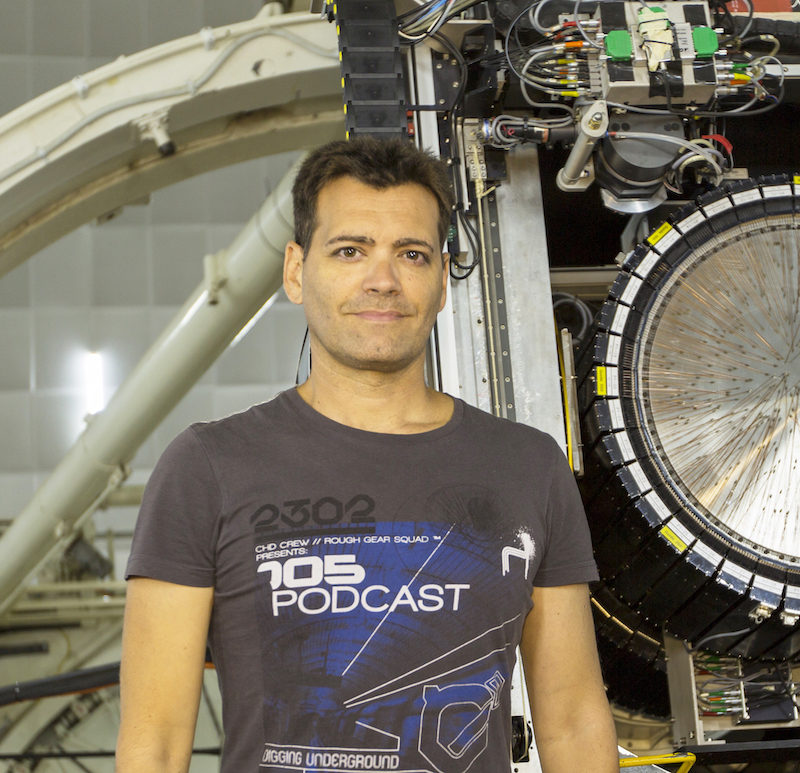
Credit: Ángel R. López-Sánchez (AAO-MQ)
Pink SuperMoon (or not)
Image of the (not) Pink (you won't see the difference) Super Moon obtained from our backyard in Sydney on Tuesday 27th April 2021, at 8:30pm local time.
This image combines 50 frames, 35ms each, obtained with a ZWO 1600MM-Pro at -20C, gain 100, using a ultra-narrow (3.5nm thick) H-alpha Baader filter.
The telescope used was a refractor Skywatcher Black Diamond 80mm, with a x0.75 focal reducer (effective focal length of 430mm) on a Skywatcher AZ-EQ6 Pro mount, everything controlled with the ZWO ASIAir.
The images (not corrected for darks or flatfield) were aligned and stacked using the Lynkeos software, also using the x2 Drizzle. The combined FITS image was then converted into TIF using Fits Liberator considering an Asinh scaling. Further adjustments with the contrast, shadows/highlights, and smart sharpening was performed in Photoshop.
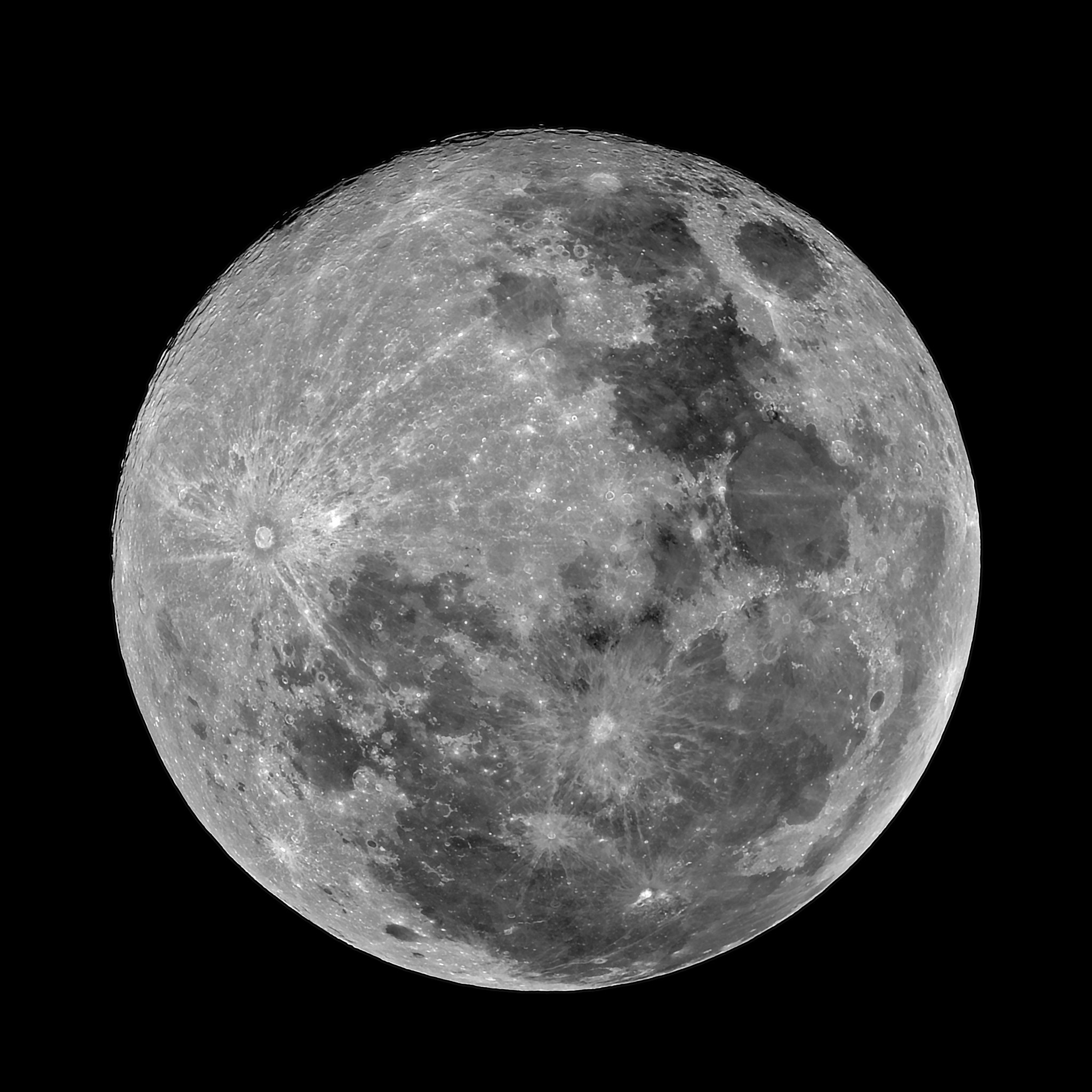
Credit of the image: Luke López-Planells (Ángels' 8 yr old son) and Ángel R. López-Sánchez (AAO-MQ).
The Trifid Nebula from Sydney
The Trifid Nebula, M 20, from my backyard, 15 km North from Sydney's city center, on 15th June 2020.
This image compiles 40 x 300s images (3.3 hours total integration time) obtained with my Skywatcher Black Diamond 80, an Orion X0.8 focal reducer (f/6), the ZWO ASI178MC camera and an OPTOLONG L-Pro filter.
I used the ZWO ASIAir to control the camera, the mount (Skywatcher AZ-EQ6) and the guiding system (ASI120MM + Orion 50mm finderscope).
Flats and darks included. Data processed with Siril software. Colour / saturation / levels / contrast / smart sharpen with Photoshop.
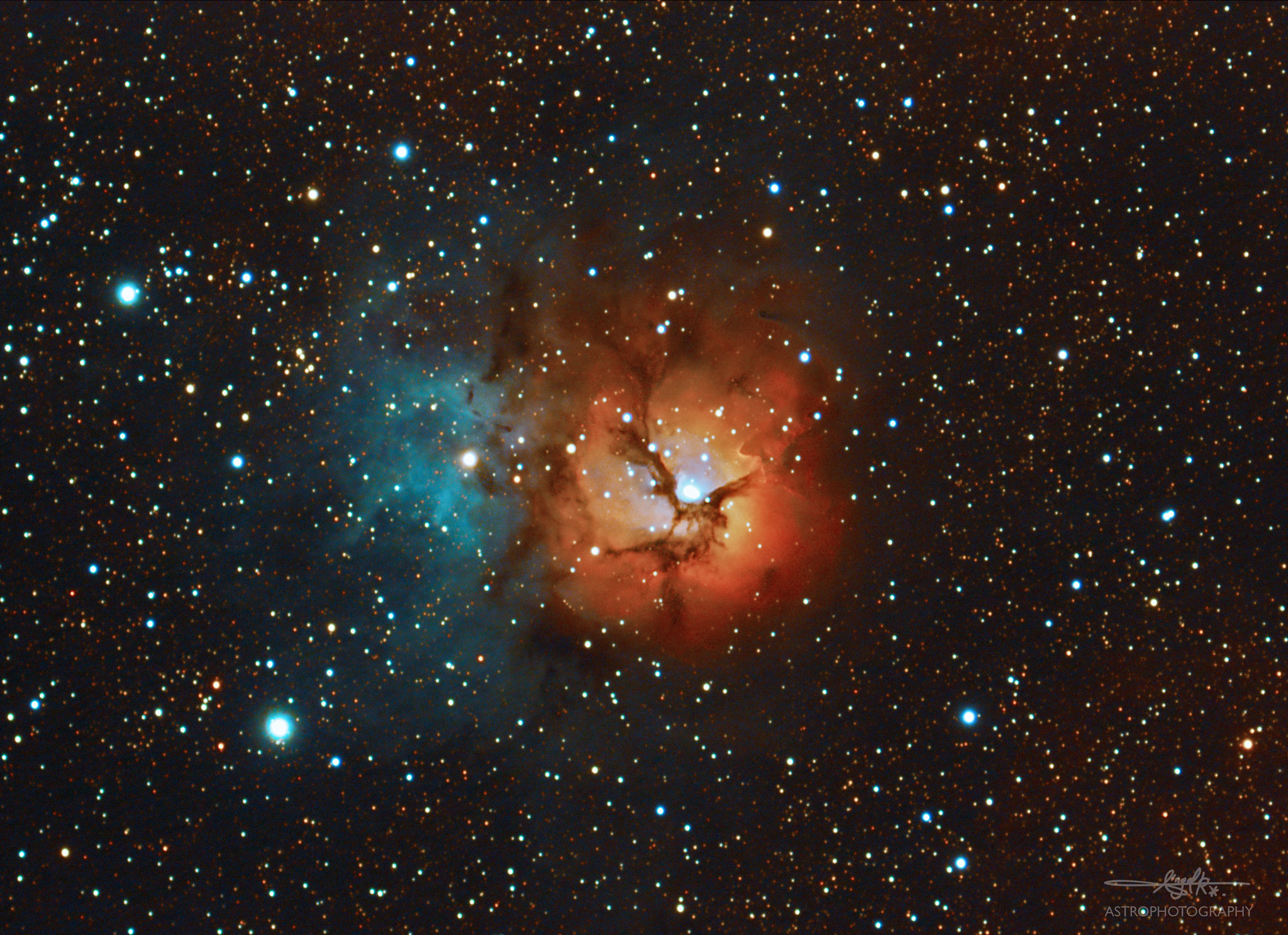
Credit: Ángel R. López-Sánchez (AAO-MQ).
Fire in the Cat's Paw Nebula
Deep H-alpha image of the Cat’s Paw Nebula (NGC 6334) in Scorpius obtained from my backyard, 15 km from Sydney’s city centre.
This image combines 40 frames I got during some few nights during September and early October 2020 (15, 16, 26, 28 Sep, 2, 3 Oct) using the ZWO ASI1600MM Pro and the H-alpha Baader 3.5nm ultra-narrow filter.
All frames had an exposition time of 900s (15 minutes), hence this image combines a total of 10 hours of telescope time!
Telescope: Skywatcher Black Diamond 80, f=600mm (f/7.5)
Equipment: I used the ZWO ASIAir to control the camera, the mount (Skywatcher AZ-EQ6) and the guiding system (ASI120MM + Orion 50mm finderscope). The H-alpha filter was in the ZWO filter drawer.
Processing: Data processed with Siril software. FITS converted on TIFF using NASA’s Fits Liberator considering a logarithmic function. Colour / saturation / levels / contrast / smart sharpen with Photoshop.
For this image I decided to give some false colour instead of just the greyscale image, I used Photoshop to get the kind of “fire” aspect to the gas in the nebulae.
I would love to get some data in broad-band filters to get the colours, but I’m afraid this will have to wait till next year, as Scorpius is already a bit too low over the western horizon, and some palm trees block the view from my backyard.
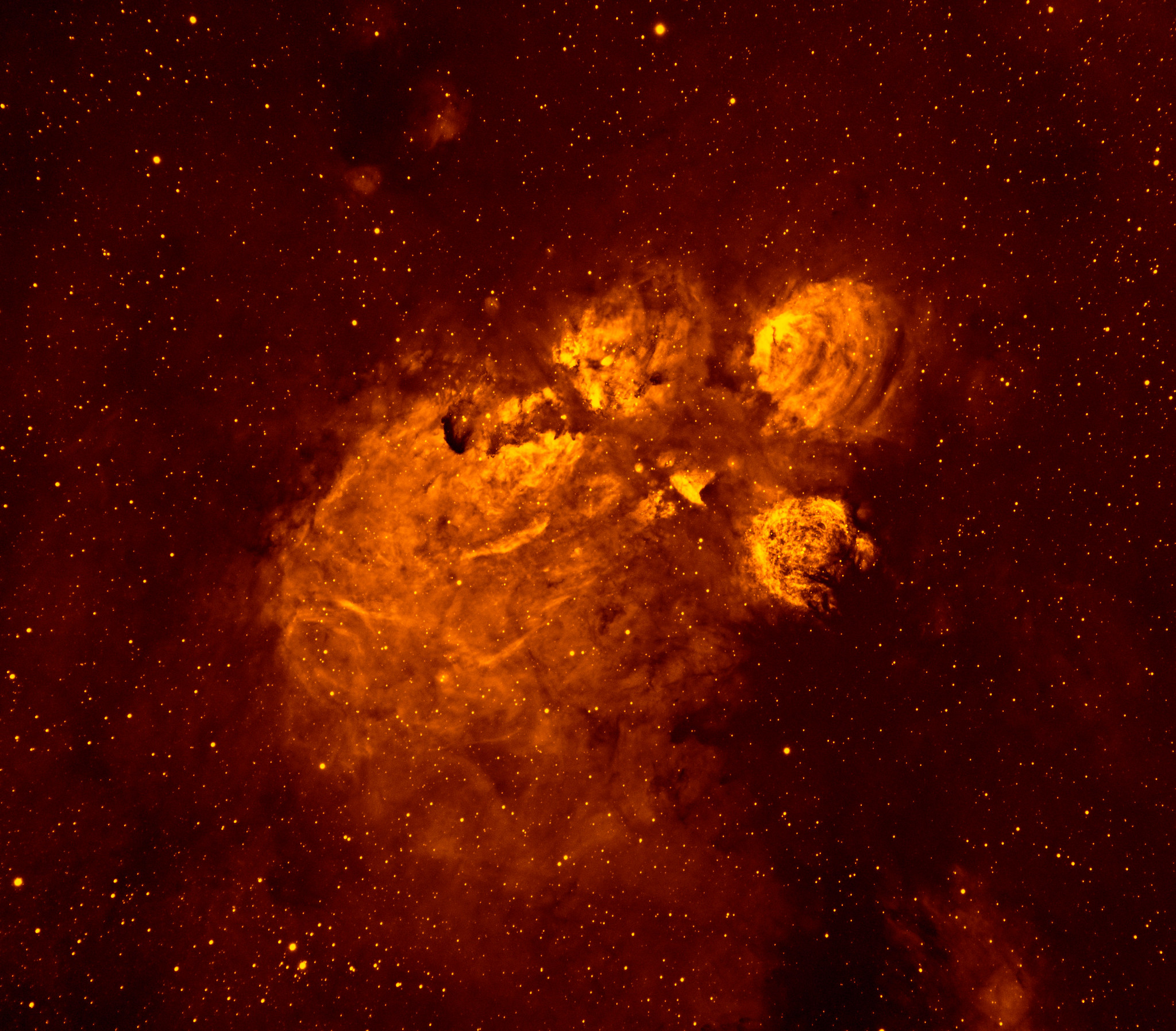
Credit: Ángel R. López-Sánchez (AAO-MQ).
My first H-alpha test of the Horsehead and Flame nebulae
H-alpha image of the Horsehead (left) and Flame (right) nebulae in Orion obtained from my backyard, 15 km from Sydney’s city centre.
This image combines 24 frames I got during some few nights in early October using the ZWO ASI1600MM Pro and the H-alpha Baader 3.5nm ultra-narrow filter.
All frames had an exposition time of 900s (15 minutes), hence this image combines a total of 6 hours of telescope time!
Telescope: Skywatcher Black Diamond 80, f=600mm (f/7.5)
Equipment: I used the ZWO ASIAir to control the camera, the mount (Skywatcher AZ-EQ6) and the guiding system (ASI120MM + Orion 50mm finderscope). The H-alpha filter was in the ZWO filter drawer.
Processing: Data processed with Siril software. FITS converted on TIFF using NASA’s Fits Liberator considering a logarithmic function. Colour / saturation / levels / contrast / smart sharpen with Photoshop.
For this image I decided to give some false colour instead of just the greyscale image, I used Photoshop to get the kind of “fire” aspect to the gas in the nebulae.
I was expecting to get more data to get the image deeper, unfortunately the weather, following "La Niña", is not cooperating in Eastern Australia in late 2020.
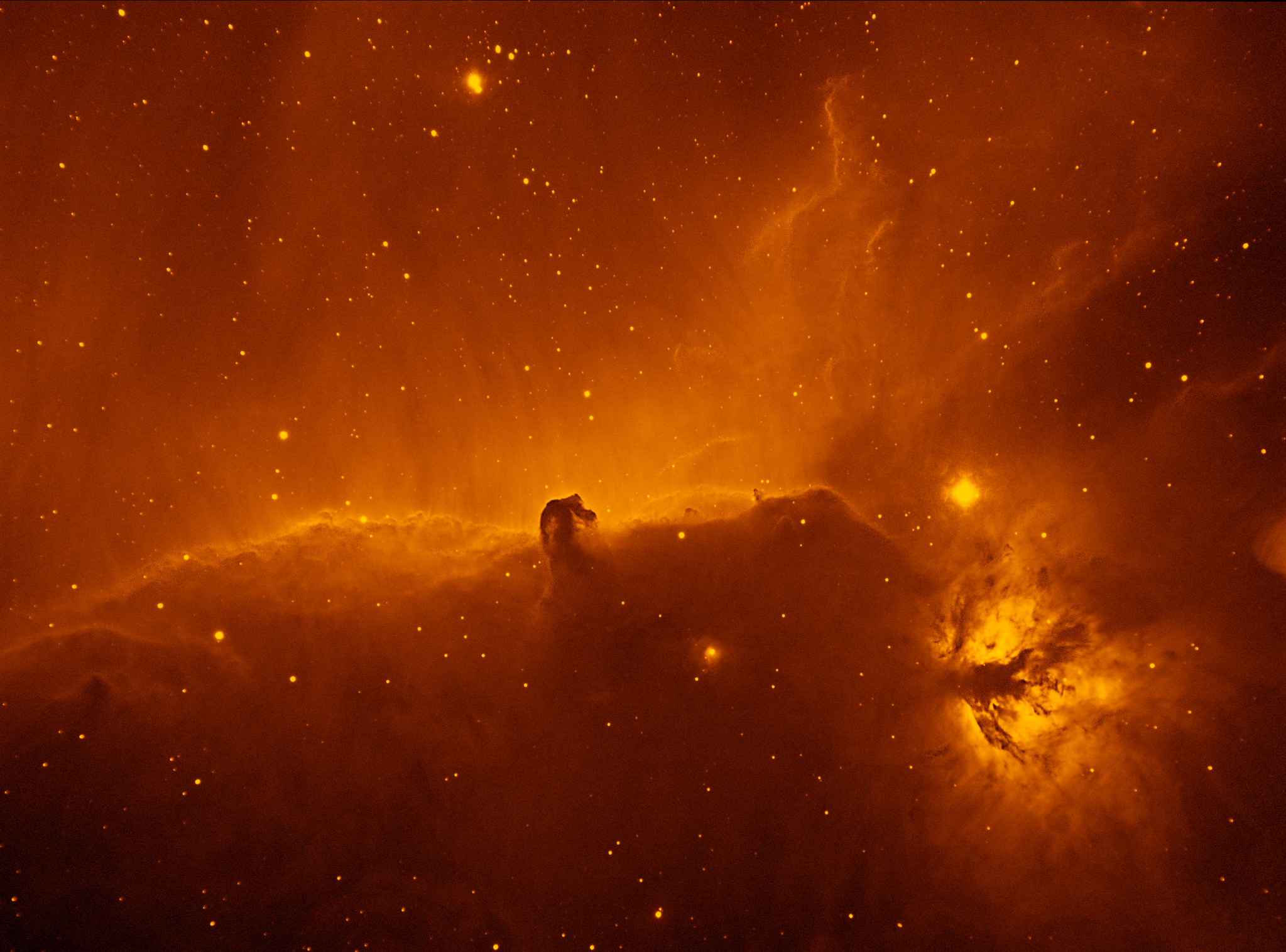
Credit: Ángel R. López-Sánchez (AAO-MQ).
Helix Nebula in H-alpha from Sydney
Deep H-alpha image of the Helix Nebula obtained from my backyard, 15 km from Sydney's city centre.
This image combines the best 40 frames of the 82 frames I got the nights of 24-30 August, 7, 12 and 15 September 2020 using the ZWO ASI1600MM Pro and the H-alpha Baader 3.5nm ultra-narrow filter.
All frames had an exposition time of 900s (15 minutes), hence this image combines a total of 10 hours of telescope time!
Telescope: Skywatcher Black Diamond 80, f=600mm (f/7.5)
Equipment: I used the ZWO ASIAir to control the camera, the mount (Skywatcher AZ-EQ6) and the guiding system (ASI120MM + Orion 50mm finderscope). The H-alpha filter was in the ZWO filter drawer.
Processing: Data processed with Siril software. FITS converted on TIFF using NASA's Fits Liberator considering a logarithmic function. Colour / saturation / levels / contrast / smart sharpen with Photoshop.
I hope to get soon some data in broad-band filters to get the colours!
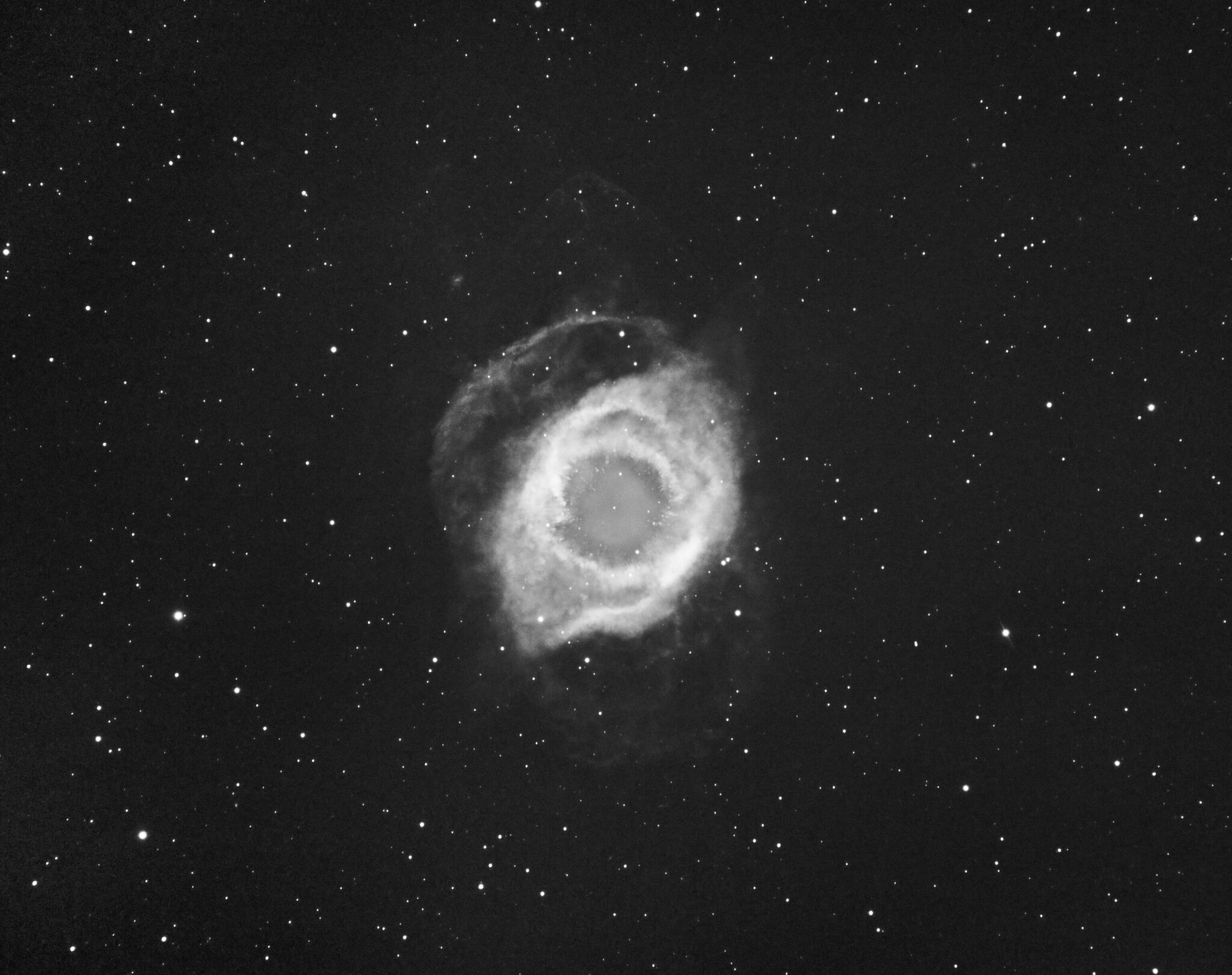
Credit: Ángel R. López-Sánchez (AAO-MQ).
Comet C/2020 F8 (SWAN) over Sydney
Comet C/2020 F8 (SWAN), Sydney, May the 4th, 2020, 5:15am
Image combining 10 x 2min exposures using an Optolong L-Pro filter, Skywatcher BD80, focal reducer Orion x0.8, ZWO ASI178MC. Mount Skywatcher AZ-EQ6 Pro mount, camera ZWO ASI120MM for guiding and ASIair for controlling everything.
Individual frames dark subtracted with Siril software, then I did the alignment on the comet manually in Photoshop (that is why stars are moved and blurry, as stacked with median), where I also played with the colour/brightness/contrast.
The top image is the resulting colour image, the bottom image is the greyscale image increasing the contrast to increase the visibility of the tail and the faintest features.
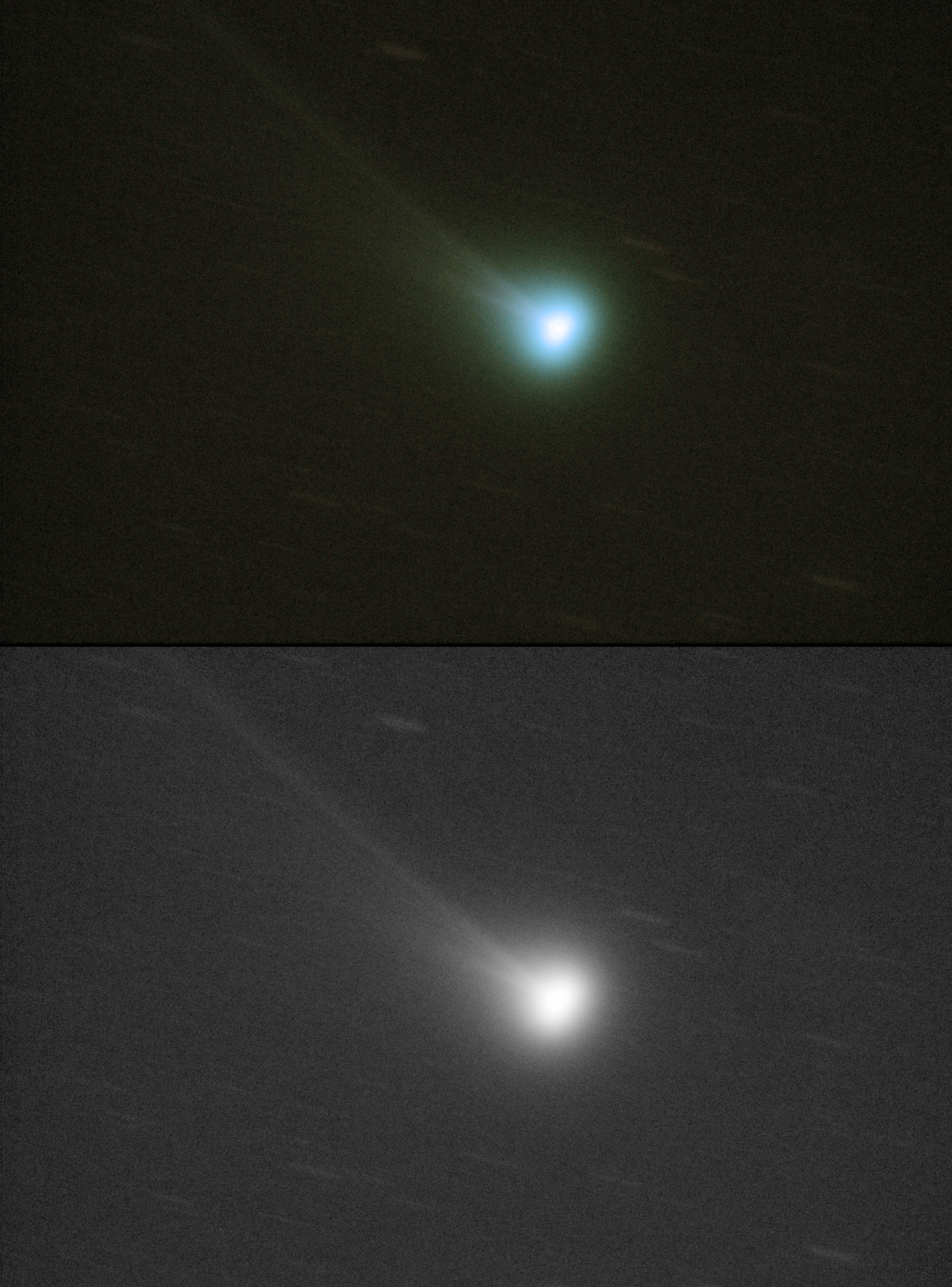
Credit: Ángel R. López-Sánchez (AAO-MQ).